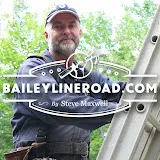0:00
In this video I want to show you the basics of soldering wire
0:04
You want to start with some safety glasses of course because soldering involves molten lead and
0:10
sometimes that can get places where you don't want it to be
0:14
I've got some wire stripped here, and I'm just going to use this joint as an example
0:21
There are many ways to connect wires but soldering is the best and I like to use soldering when I can because it's absolutely
0:30
certain. If you have a good solder joint, it's never going to let you down
0:34
So the first step with something like this is to twist the wires together
0:40
Now if this is more finely braided wire, the segments were thinner, I'd be able to twist it by hand, but it's a little too coarse for that
0:50
So I'm just going to use some pliers here. Before you solder
0:55
you want the joint to be physically connected and soldering is a great way, or twisting is a great way to make that happen
1:06
So I'll just twist it here, cut off the frazzled end, and I'm ready to go. Now
1:16
technically this joint is going to conduct electricity, but it might not continue to conduct electricity if it's not soldered
1:24
Corrosion can set in and especially with the lower voltage side, the solar generator, meaning the 12 volt side, any kind of dirt on that's going to be a problem
1:36
To make the solder connection, I'm going to need some solder. Solder
1:41
for this purpose is a combination of lead and tin and this is what they call acid core solder. So in the middle of this
1:50
there's a little bit of acid which helps to clean the metal for a nice solder joint
1:57
Now this is a soldering gun. You pull the trigger and in a few seconds the tip
2:07
heats up hot enough to melt the solder and to heat the wire so the solder is going to melt and flow into the pores
2:16
So that's the process. I'm going to start by securing this wire joint
2:25
in this vise here. I think it'll stay there on its own without tightening it up
2:30
And the thing about soldering is you want everything to be as clean as possible
2:37
The solder here looks pretty clean, but it's going to have some oxidation on the outside
2:43
So I'm using a little bit of emery paper to clean that off
2:49
And the same goes for the soldering gun. I'm going to heat it up a little bit
3:04
It's the tip we're interested in. And you can see that that tip is clean enough now to do what we want
3:12
Now when you're soldering you want the metal to be hot enough to melt the solder
3:18
See I can... I'll show you the way not to do it right now
3:22
I've heated up the soldering gun and I can touch it to the solder and it melts
3:28
But you see the wire underneath isn't hot enough for that to flow. So that would be a bad soldering joint. They call that a cold
3:37
soldering joint. It's not going to do you any good. So the first thing you want to do is to heat the wire
3:43
so that it's hot enough that the wire actually melts the solder
3:50
So let's just... This is fairly thick wire. So it's going to take a little bit of time
4:01
So this is fairly thick wire. So it's going to take a little bit of time
4:08
But it's happening. And there
4:36
That's a good solder joint and it's never going to let you down


